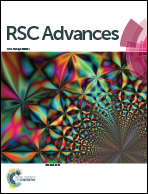A practical and novel “standard addition” strategy to screen pharmacodynamic components in traditional Chinese medicine using Heishunpian as an example†
Abstract
The study of pharmacodynamic components in traditional Chinese medicine (TCM) is very important for future drug development and quality control of TCM. The present study established a new method for screening pharmacodynamic components (PCs) in TCM based on the strategy of standard addition (SA). The novel strategy was then applied to screen anti-inflammatory PCs in Heishunpian (HSP), the processed product of Aconitum carmichaeli Debx. We initially screened target components (TCs, possible PCs) by analyzing the correlation between UPLC-Q-TOF-MS fingerprints of chemical components and the anti-inflammatory efficacies of different HSP extracts. On the basis of spectrum-effect relationship (SER) analysis and TC determination, we added TC quantitatively into HSP extracts, evaluated the pharmacodynamic contribution ratios of TCs related to the original TCM using a mouse ear edema model, and compared them with the contribution ratio of the TC standard. The anti-inflammatory PCs of HSP were then defined. Results showed that hypaconitine, deoxyaconitine and chasmanine were anti-inflammatory PCs in HSP with positive relations with HSP efficacy. Thus, SA was used to systematically evaluate the effect of chemical ingredients in TCM. The proposed method presents simple operation, strong feasibility and reliability, and provides a new approach for screening PCs in TCM in a manner that highlights the complexity and multi-component effects of TCM.


 Please wait while we load your content...
Please wait while we load your content...